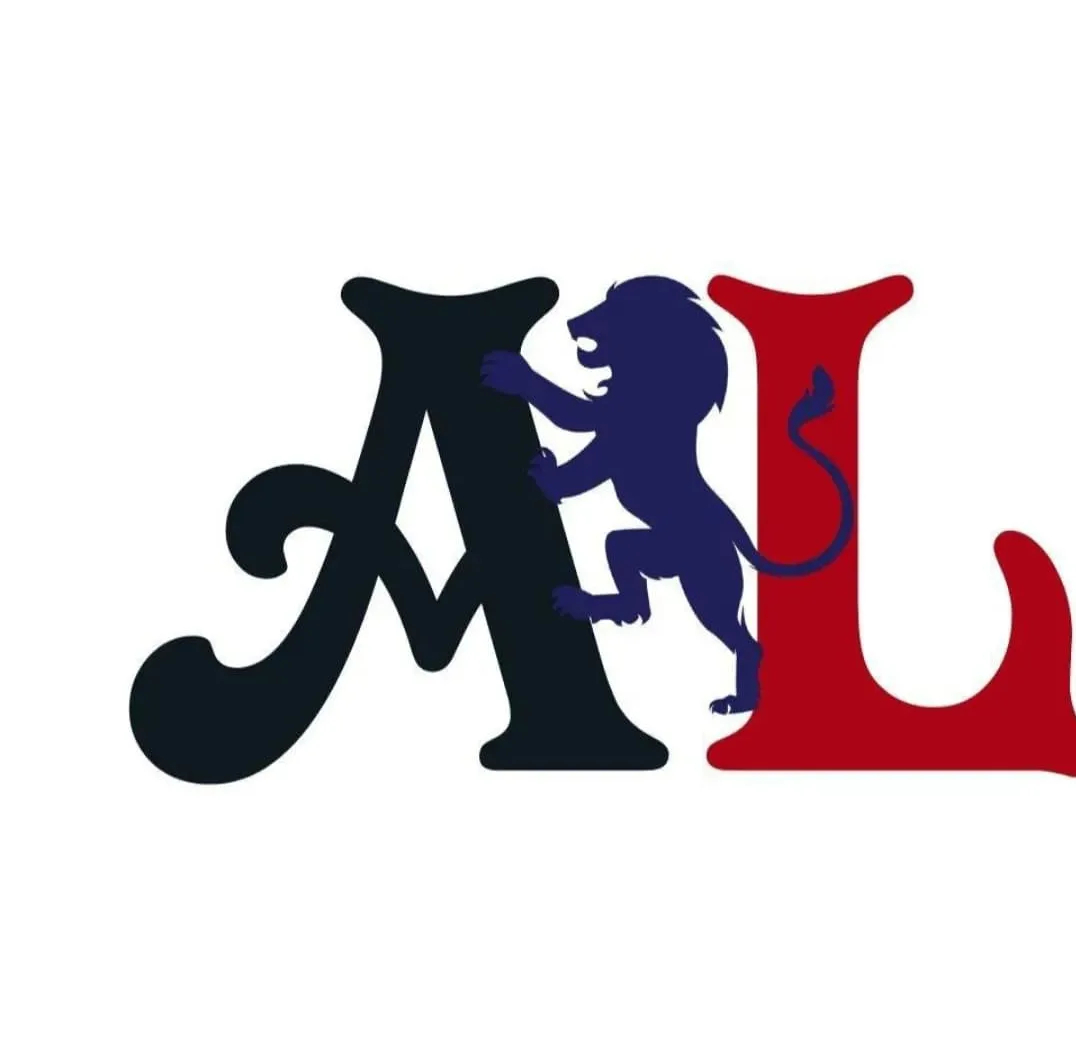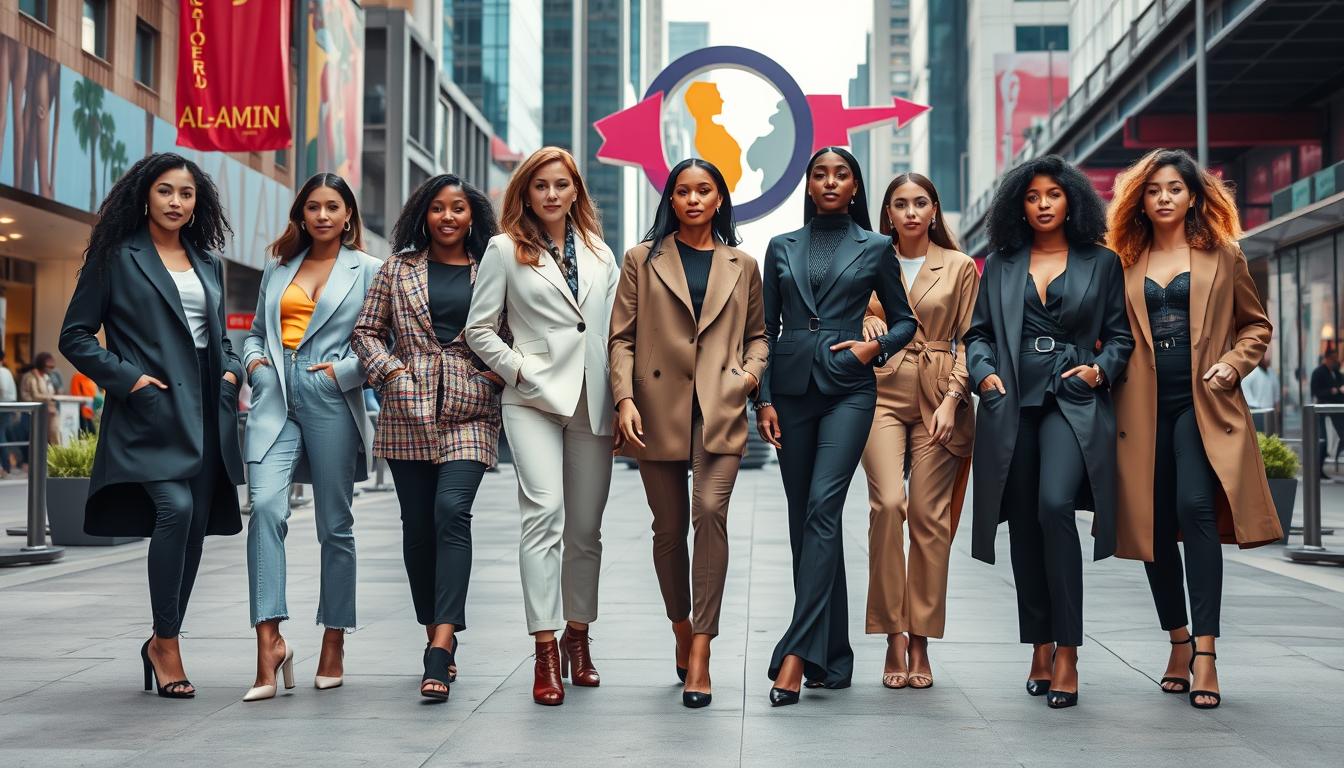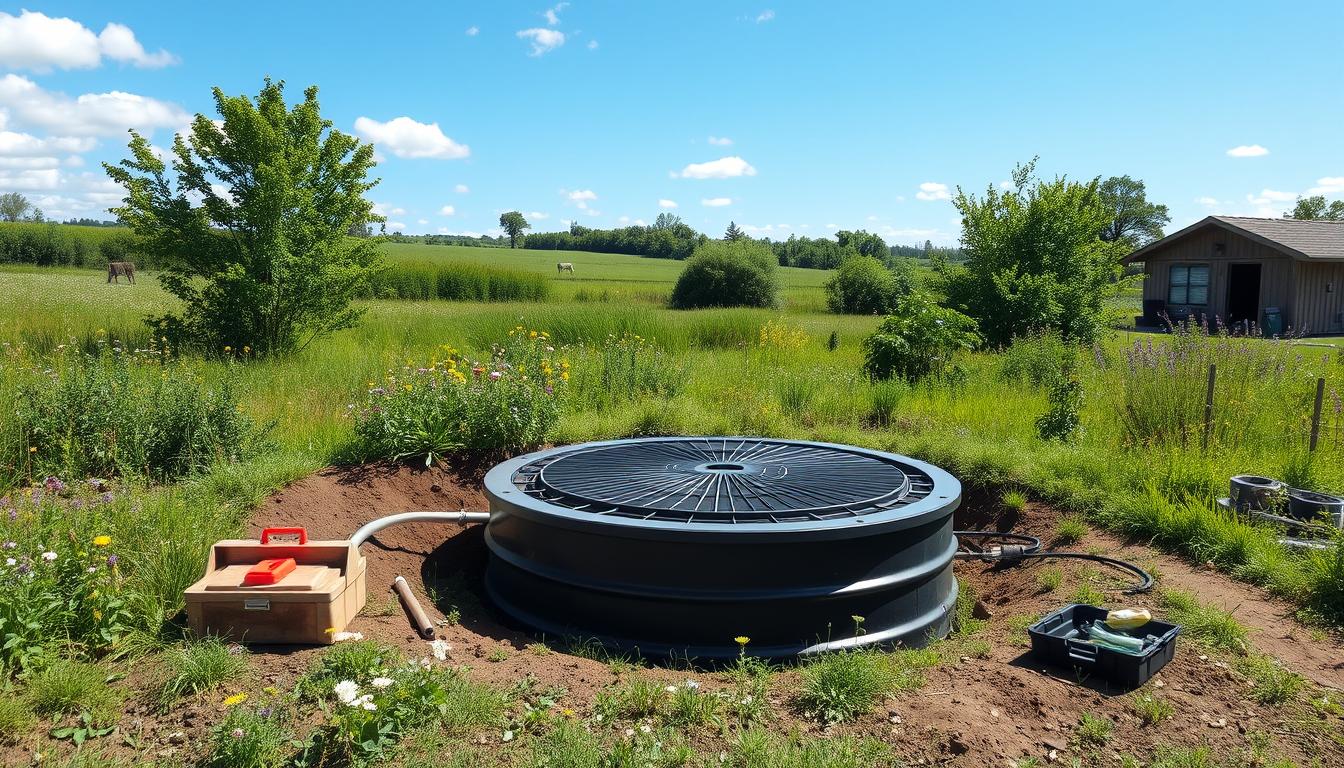A new global initiative, Women Wardrobe 2025, is changing the fashion world. It’s all about making the industry fair for everyone. This program wants to make sure women’s voices are heard everywhere.
Women Wadrop 2025 is all about making the fashion world fair for women. It’s about working together and trying new things. The goal is to break down the barriers that stop women from succeeding.
This initiative is changing fashion by making it more inclusive. It’s about giving women the chance to be leaders and innovators. Women Wardrobe 2025 is making the industry better for everyone, especially women.
Ready to refresh your wardrobe? Don’t miss out on the latest styles at Like Resources! From trendy dresses to comfortable activewear, we have everything you need to elevate your fashion game.
👉 Shop Now at www.likeresources.net and take advantage of our FREE SHIPPING on all orders!
Key Takeaways
- Women Wardrobe 2025 is a global initiative aimed at promoting gender equality in the fashion industry.
- The initiative seeks to empower women and amplify their voices and contributions in the fashion sector.
- Through collaboration and innovation, Women Wadrop 2025 is working to challenge the status quo and dismantle barriers to women’s progress.
- The program focuses on fostering inclusive representation, championing female creatives, and transforming the industry to be more equitable and diverse.
- Women Wardrobe 2025 is poised to redefine the fashion landscape, paving the way for a more inclusive and empowered future for women in the industry.
Understanding the Vision Behind Women Wardrobe 2025
The Women Wardrobe 2025 initiative is a global effort to promote gender equality in the fashion industry. It aims to make the industry more inclusive and fair for women. This project seeks to change the industry’s landscape in a big way.
The Origins of the Global Initiative
Women Wardrobe 2025 started to address the challenges women face in fashion. It was launched in 2020 by leaders, non-profits, and gender equality advocates. They wanted a solution that involved everyone.
Core Values and Mission Statement
- Promote equal opportunities and representation for women throughout the fashion value chain
- Foster an environment that encourages and supports the professional advancement of women
- Empower women to take on leadership roles and decision-making positions
- Advocate for policies and practices that eliminate gender-based discrimination and bias
- Collaborate with partners to drive sustainable and impactful change
Key Stakeholders and Partners
Women Wardrobe 2025 involves many stakeholders, like fashion brands and NGOs. It aims to use everyone’s skills and resources to reach its goals. This way, it can make a big difference.
“The success of Women Wadrop 2025 depends on our ability to unite and mobilize the fashion industry, government, and civil society towards a common goal of gender equality. Together, we can create a more equitable and empowered future for women in this dynamic sector.”
– Sarah Jacobs, Co-founder, Women Wardrobe 2025
The Current State of Gender Equality in Fashion
The fashion world mirrors society’s values and norms, including gender equality. While progress has been made, women still face a gap in representation and empowerment. This gap exists across many areas of the fashion world.
Women are underrepresented in leadership roles in fashion companies. Only 12% of chief executive officers in the fashion and luxury industry are women, according to McKinsey & Company. This lack of women in top positions can lead to gender biases and limit the industry’s ability to meet the needs of female consumers.
The fashion industry has also been criticized for its unrealistic body standards and gender stereotypes. Only 29% of women feel represented by the images they see in fashion media, a survey by the Dove Self-Esteem Project found. This limited representation can harm the self-esteem and body image of women, especially young ones.
| Gender Equality Indicators | Fashion Industry Performance |
|---|---|
| Women in Leadership Roles | 12% of CEOs |
| Representation in Media | 29% of women feel represented |
| Wage Gap | Women earn 82 cents for every dollar earned by men |
| Diversity and Inclusion | Limited representation of diverse body types and ethnicities |
The gender pay gap is another issue, with women in fashion earning 82 cents for every dollar men earn. This gap highlights the need for fair pay and career opportunities for women in the industry.
Despite some progress, the fashion industry still has a long way to go in achieving gender equality. The Women Wadrop 2025 initiative aims to address these challenges, working towards a more inclusive and empowering environment for women in fashion.
Breaking Down the Women Wardrobe 2025 Framework
The Women Wardrobe 2025 initiative aims to make the fashion industry more equal for women. It has a detailed plan with strategies, ways to measure success, and a timeline. This plan is designed to reach its goals by 2025.
Ready to refresh your wardrobe? Don’t miss out on the latest styles at Like Resources! From trendy dresses to comfortable activewear, we have everything you need to elevate your fashion game.
👉 Shop Now at www.likeresources.net and take advantage of our FREE SHIPPING on all orders!
Implementation Strategies
The initiative has a strong plan to get things done. It includes:
- Working with top fashion brands and industry groups to spread the initiative’s ideas.
- Offering training to help women in all parts of the fashion world, from making clothes to marketing.
- Creating new rules and policies to help women succeed in the fashion industry.
Measuring Success and Impact
To see if the initiative is working, a special plan has been made. This includes:
- Setting clear goals to check if women are getting more opportunities and fair pay in fashion.
- Doing surveys and collecting data to understand women’s experiences in fashion and find new challenges and chances.
- Keeping track of how things are going and making changes based on what’s learned.
Timeline and Milestones
The initiative has a detailed plan with important steps to follow. Key steps include:
- Starting the initiative and getting 100 big fashion brands on board by 2021.
- Seeing a 20% rise in women in leadership roles in fashion by 2023.
- Getting pay is equal for men and women in the same jobs in fashion by 2025.
Looking at the Women Wardrobe 2025 plan, it’s clear it’s a big effort to change the fashion world. It aims to empower women and fight for equality at every level.
Sustainable Fashion and Gender Empowerment
The Women Wardrobe 2025 initiative focuses on sustainable fashion and empowering women. It sees these two areas as closely linked. The goal is to change the fashion world into a leader in Eco-friendly clothing and women’s empowerment.
Sustainability is crucial in fashion, but the industry’s impact on the environment is often ignored. Women Wardrobe 2025 wants to change this. It supports sustainable fashion to protect the planet and empower women in the industry.
- Promoting the use of organic, recycled, and ethically sourced materials
- Encouraging the adoption of renewable energy and zero-waste production methods
- Supporting the development of innovative, Eco-friendly textile technologies
Women Wardrobe 2025 also focuses on women’s empowerment in fashion. It offers education, skills training, and leadership chances. This helps women have more influence in the fashion world.
“Fashion has the power to uplift and empower women, but only when it is built upon a foundation of sustainability and social responsibility.”
Women Wardrobe 2025 is changing the fashion world. It combines sustainable fashion and women’s empowerment. This creates a future where fashion is both good for the planet and empowering for women.
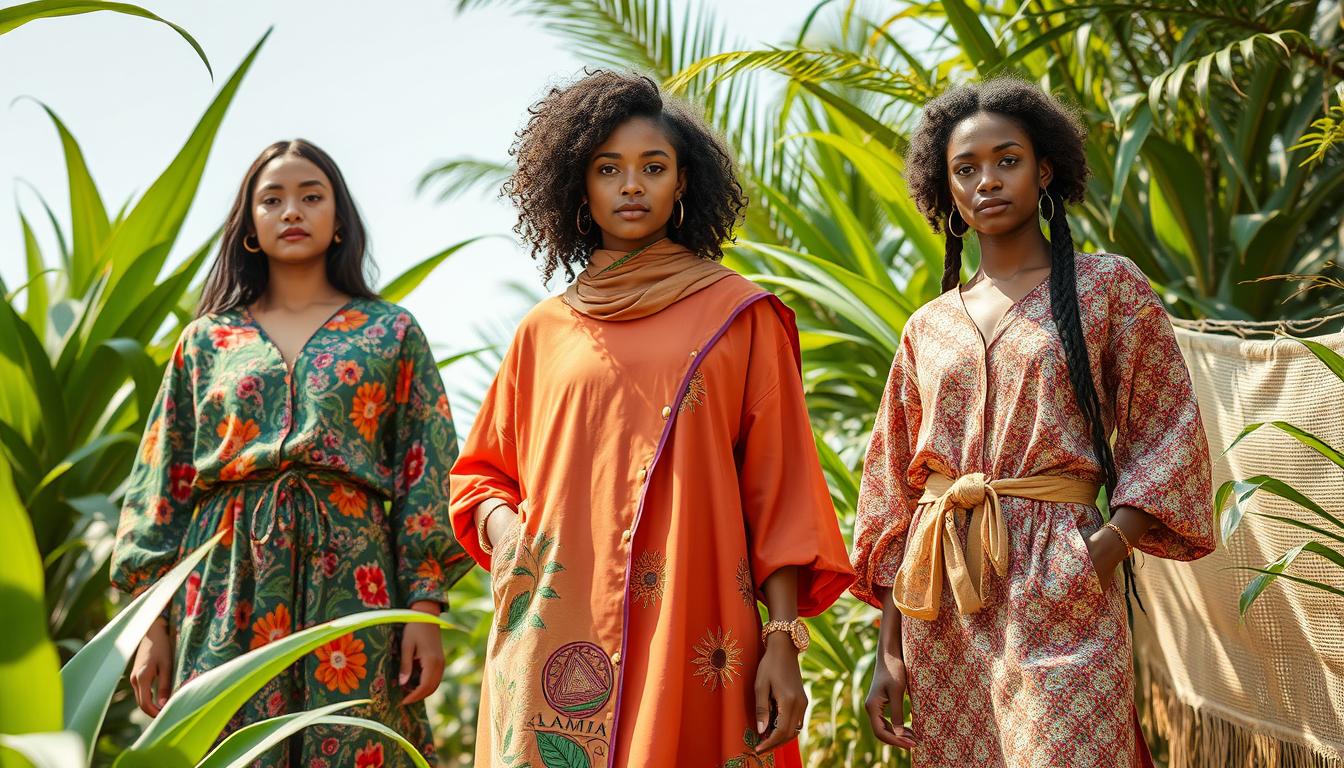
Technology’s Role in Advancing Women’s Fashion Rights
The fashion world is a key area for fighting for gender equality. The Women Wardrobe 2025 plan sees technology as a game-changer. It believes tech can empower women and push for their rights in this fast-changing field.
Digital Innovation in Fashion Industry
The fashion world is seeing a big leap in digital innovation. This tech shift is crucial for getting more women involved and in leadership roles. E-commerce makes shopping easier and more flexible for women. Data tools help in making clothes that fit better, making fashion more inclusive.
AI and Machine Learning Applications
AI and ML are changing the fashion game, impacting women’s rights and chances. AI virtual fitting rooms offer size advice, cutting down on returns and boosting happiness. ML helps make fashion more sustainable and fair, helping women workers and entrepreneurs.
The Women Wardrobe 2025 initiative is leading the charge. It uses tech to empower women, challenge old ideas, and build a fairer fashion future.
“Technology has the power to break down barriers, amplify women’s voices, and create a more inclusive and equitable fashion landscape.”
Economic Impact on Women’s Fashion Industry
The women’s fashion industry is a big player in the global economy. But, with more gender equality, its impact could grow even more. Experts say empowering women and making decisions together will bring new ideas, reach more customers, and open up big economic chances.
A recent study shows the women’s fashion industry is set for big market growth soon. By valuing diversity and using women’s unique views, this industry can reach new customers, create innovative products, and boost its economic impact.
- More women in leadership can lead to products that better meet female needs, leading to more sales and loyal customers.
- Teams with both men and women can find and serve new market areas, bringing in more money and growing the industry.
- Supporting women entrepreneurs and businesses can help local economies, create jobs, and make the industry more diverse and lively.
The women’s fashion industry has a huge chance to make a big economic impact and grow the market with more gender equality. By using diverse views and ensuring everyone has a say, this industry can reach its full potential. This will benefit both businesses and customers.
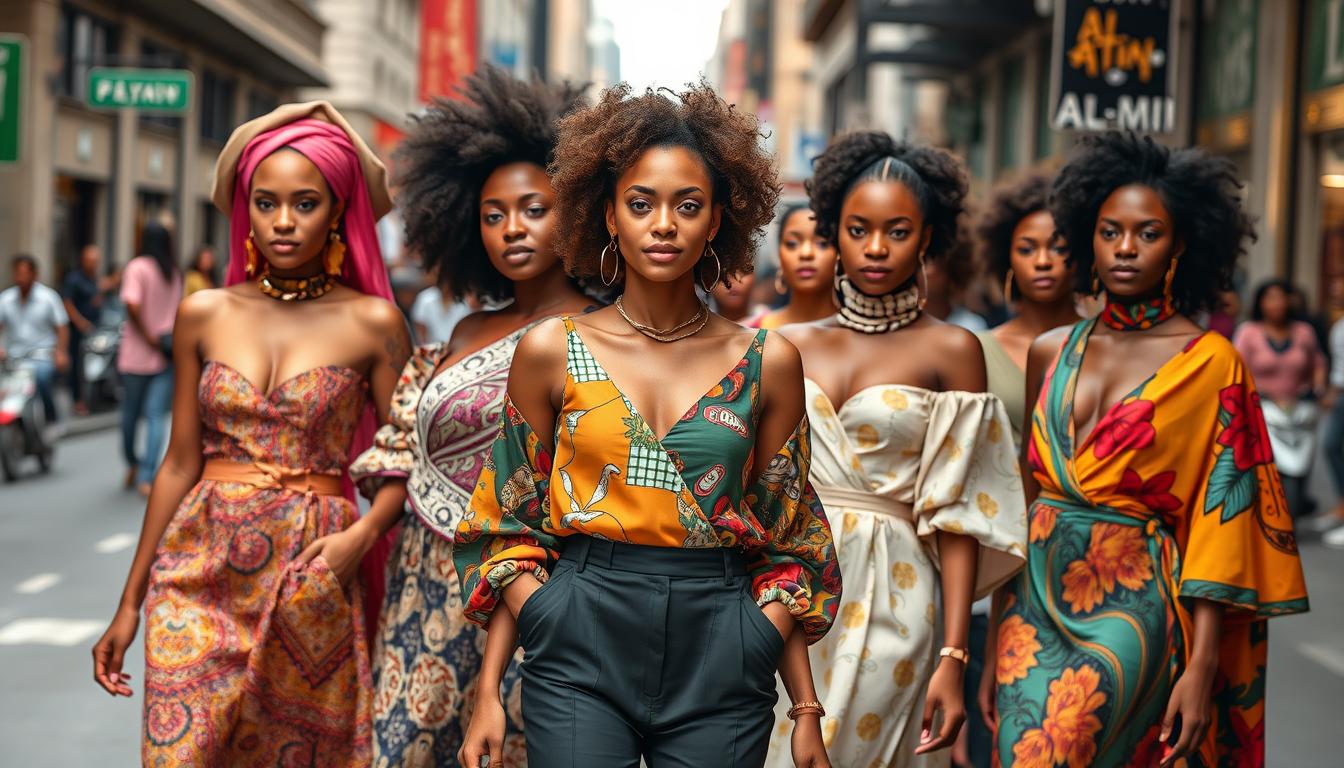
Cultural Perspectives and Regional Adaptations
The Women Wardrobe 2025 initiative focuses on cultural diversity and regional differences. It aims to promote gender equality in the global fashion industry. Each market has its own challenges and opportunities, needing a customised approach.
Ready to refresh your wardrobe? Don’t miss out on the latest styles at Like Resources! From trendy dresses to comfortable activewear, we have everything you need to elevate your fashion game.
👉 Shop Now at www.likeresources.net and take advantage of our FREE SHIPPING on all orders!
Global Fashion Markets Response
Different regions have reacted to the Women Wardrobe 2025 initiative in various ways. Some markets have welcomed it with open arms, while others have been more cautious. They worry about cultural norms and traditional gender roles.
To address these worries, the initiative encourages open dialogue and collaboration. It works with local stakeholders to understand each market’s nuances. This way, the Women Wardrobe 2025 team can create strategies that fit the local culture and values.
Local Implementation Challenges
Implementing the Women Wardrobe 2025 initiative locally comes with its own set of challenges. Access to education, economic disparities, and societal attitudes towards women’s empowerment vary greatly across regions.
- In some markets, traditional gender roles and social norms may present barriers to the adoption of the initiative’s goals.
- Access to resources and opportunities for women in the fashion industry can be limited in certain developing regions, requiring targeted interventions.
- Overcoming cultural biases and fostering a mindset shift towards gender equality is an ongoing process that requires patience and sustained effort.
To tackle these challenges, the Women Wardrobe 2025 team works closely with local partners. These include fashion brands, non-profit organisations, and government agencies. Together, they develop strategies that meet the unique needs of each market.
| Region | Cultural Considerations | Key Initiatives |
|---|---|---|
| Asia | Strong emphasis on traditional gender roles and hierarchical social structures | Collaboration with local fashion influencers, targeted skills training, and community-based empowerment programs |
| Europe | Relatively progressive attitudes towards gender equality, but persistent pay gaps and glass ceilings | Advocacy for policy changes, mentorship programs, and corporate diversity initiatives |
| Latin America | Patriarchal societal structures and high rates of gender-based violence | Partnerships with women’s rights organisations, educational campaigns, and safe workplace initiatives |
The Women Wardrobe 2025 initiative aims to embrace cultural diversity and adapt to regional needs. It wants to ensure its vision for global gender equality in the fashion industry is heard worldwide. The goal is to create lasting, impact change.
Education and Skills Development Programs
The Women Wardrobe 2025 initiative is all about global gender equality. It focuses on education and skills development for women. This program wants to help women succeed in the fashion industry.
At the core of Women Wadrop 2025 are educational programs and vocational training. These are designed to give women skills in fashion, business, and entrepreneurship.
Unlocking Women’s Potential in Fashion
Women Wardrobe 2025 offers a wide range of educational programs. These programs meet the needs and dreams of women in fashion. They include:
- Specialized fashion design and textile courses
- Business management and entrepreneurship workshops
- Digital skills training for e-commerce and social media marketing
- Mentorship and networking opportunities with industry leaders
- Scholarships and financial aid to support women’s educational pursuits
Women Wardrobe 2025 invests in fashion education and skills development for women. It aims to empower them to lead in the global women’s empowerment movement in fashion.
| Program | Focus Area | Impact |
|---|---|---|
| Fashion Design Intensive | Technical skills, creativity, and textile innovation | Equipping women with the necessary expertise to thrive as fashion designers |
| Entrepreneurship Boot camp | Business planning, marketing, and financial management | Empowering women to launch and scale their own fashion brands |
| Digital Upskilling Workshop | E-commerce, social media, and data analytics | Enabling women to leverage technology for fashion industry success |
By investing in women’s education and skills, Women Wadrop 2025 aims to unlock their potential. It wants to drive change in the global fashion industry.
Partnership Opportunities and Collaboration Models
The Women Wardrobe 2025 initiative knows that achieving global gender equality in fashion needs teamwork. It aims to work with various stakeholders to use their resources, knowledge, and influence for change.
Corporate Engagement Strategies
Women Wadrop 2025 works closely with fashion brands, retailers, and leaders to build fashion industry partnerships. Through these corporate engagement efforts, it pushes companies to be more inclusive. It encourages them to support women’s growth and adopt practices that consider gender.
- Creating joint programs to empower women in fashion’s supply chain
- Setting up mentorship and skills training for female fashion pros
- Working on new campaigns to break down gender stereotypes and honour women’s roles
N G O and Government Partnerships
Women Wardrobe 2025 also teams up with N G O groups and governments to tackle deep-seated gender equality issues. These NGO collaboration and government partnerships use their strengths, policies, and networks to boost the initiative’s effects.
- Working with local and global NGOs for targeted programs in hard-to-reach areas
- Pushing for policy changes and laws that safeguard women’s rights in fashion
- Sharing knowledge and best practices among different groups
By building these partnerships, Women Wadrop 2025 aims to create a powerful network. This network empowers women, challenges gender norms, and works towards a fairer fashion industry.
| Partnership Type | Objectives | Key Initiatives |
|---|---|---|
| Corporate Engagement | Get businesses to commit to gender equality |
|
| NGO and Government Collaboration | Overcome deep-seated gender equality barriers |
|
Success Stories and Case Studies
The Women Wardrobe 2025 initiative has changed many women’s lives in the fashion world. Fatima Salazar, founder of “Eco Chic”, is a great example. She used the initiative’s help to start her eco-friendly fashion brand and push for ethical fashion.
Maya Dutt, head designer at “Luxe Atelier”, is another leader. Her designs and fight for gender equality have made her famous. Maya has helped new designers and pushed for more diversity in fashion through Women Wadrop 2025.
Amelia Ramirez, CEO of “Seamless Couture”, is also a success story. Thanks to Women Wadrop 2025, she overcame obstacles and achieved great things. Amelia grew her sustainable fashion brand and became a strong voice for women’s rights in fashion.
